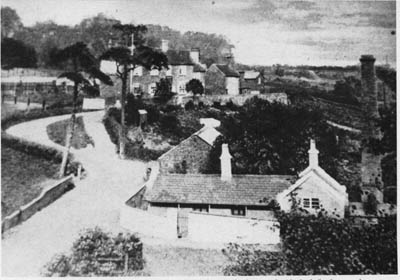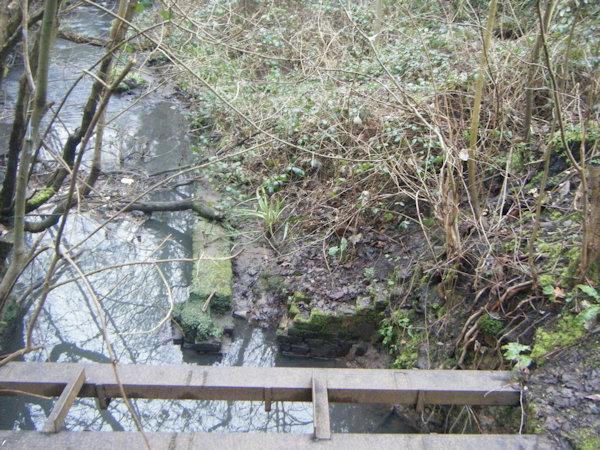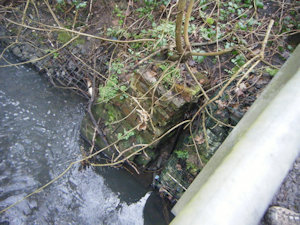 |
Dedication: Saint Mary the Virgin? Location: Coordinates: 52.47937N, -2.10032W Grid reference: SO932868 Status: destroyed? |
HOME - ENGLAND - WORCESTERSHIRE
 |
Dedication: Saint Mary the Virgin? Location: Coordinates: 52.47937N, -2.10032W Grid reference: SO932868 Status: destroyed? |
Dudley's little-known spa was once known by many names, including "Ladywood Spa", "Pesnett Spa", "Cradley Salt Well", and, of course, the "Lady Well". It appears that the well has had a reputation for healing for hundreds of years, and very possibly was originally a medieval holy well, associated with the Virgin Mary. The earliest reference (that I have found) to the site dates from 1686, and can be found in Robert Plot's Natural History of Stafford-Shire, in which he describes the well thus:
|
In Peſnet Chaſe South from Dudley about a mile and half there is another weak brine belonging to the right Honorable Edward Lord Ward, of which his Lordſhip once attempted to make Salt; but the brine proving to [sic] weak, He thought fit to deſiſt, though poſſibly it might have been advanced to profit by the Art of tunnelling much uſed in Cheſhire to keep out the freſhes. |
In the early 19th century, the proprietors of the wells attempted to increase the popularity of the site. An advertisment that dates from that time, and which was reportedly distributed at the spa by the owners, described it as "one of the best Mineral Waters in the Kingdom, for almost every disease incident to the human body". The spa even found its way into Pigot and Co.'s National Commercial Directory for 1828-9, in which it was described as "a valuable spa, possessing sanative qualities similar to the waters of Cheltenham and Leamington". A chemist from London, named Mr I. T. Cooper, was employed to analyse the water; his conclusions were used to justify the claim that the water was effective in the curing of scrofula. Samuel Lewis, in 1831 in A Topographical Dictionary of England (volume 2), expressed his opinions that the water was good for skin diseases and "complaints arising from indigestion". A. B. Granville, writing in 1841 in The Spas of England, and Principal Sea-Bathing Places, provided an account of a man being "healed" as a result of using the water:
|
An honest and intelligent tradesman of Birmingham, whom I met in this expedition, and who was certainly not an interested party, assured me that the water had acquired more celebrity for the cure of weakness of limbs and palsy, than for any thing else. As a proof, he related the case of a friend of his who had suffered under a paralytic stroke, by which he was at once deprived of motion and vision on one side of the body, as well as of the power of speech, whereby he became totally unable to attend to business. He applied to this Spa, where he took several warm-baths, and drank some of the water for three weeks, at the end of which time he was completely restored. Yet the poor man had, in the first instance, tried every medical advice and means, including electricity, without any effect, and to the serious detriment of his scanty purse. |
Until relatively recently, a small cluster of buildings could be seen at the site of the well. These were described by A. B. Granville, in the very same publication, as "a small building", which was "like a cottage", and "two indifferent looking bathrooms". They can be seen in the image above, which dates from the early 20th century.
Though the spa did attract some custom, as evidenced by the construction of the Saltwells Inn, which cannot have been built for any reason other than for the purpose of providing accommodation to the spa's visitors, it never became as popular as its owners had hoped. This may have been down to the fact that cholera was, at the time, so rife in Dudley that potential customers were put off. By the early 20th century, all use of the baths had ceased.
Today, the site is completely unrecognisable: only the scant remains of the baths can be seen, and, when I visited the site in February, 2025, it was completely overgrown. Whether the "Lady Well" still exists somewhere in the undergrowth is uncertain.
 |
 |
|
Access: A public footpath runs right beside the site of the well. |
Copyright 2025 britishholywells.co.uk